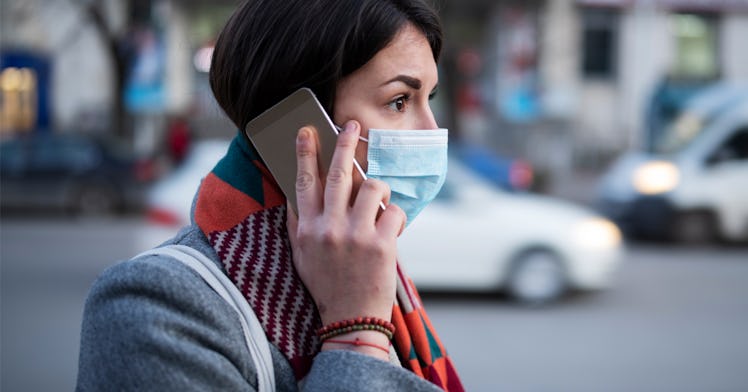The Best Ways to Sanitize Your Cell Phone to Prevent Coronavirus
The virus can survive on your phone. Here's what you can do to clean it.

You’re (hopefully) already scrubbing your hands constantly to protect yourself, and others, against the spread of the COVID-19 novel coronavirus. The logical next step is to make sure that the object those hands touch more than any other — your smartphone — is similarly spic and span. In fact, there are easy and common-sense ways to clean your cell phone.
The CDC recommends that if you’re at a loss, you should consider using alcohol-based wipes or sprays containing at least 70 percent alcohol to disinfect touch screens. Dry surfaces thoroughly so liquid doesn’t pool (and ruin your device).
Without question, phones are havens for germs of all kinds. Dan Barnes, the co-founder one smartphone sanitizing company, PhoneSoap, called phones “the third hand you never wash,” which is a weird mental image but a point well taken. “Unless you treat your phone the same way as your hands, it’s hard to keep all three clean,” he added.
Klausner mostly agrees, though he does say that it isn’t clear that transmission of germs from hard surfaces is as likely or dangerous as airborne transmission, particularly because after a couple of hours the contagiousness of any germs on the surface of a phone “drops dramatically.”
Still, it’s not a bad idea to clean your phone in the midst of a global health crisis, particularly when COVID-19 have now been found in 12 different states. There are two basic options: liquid methods (sprays and wipes) and UV light. An NIH study found that both methods can be effective at reducing aerobic bacterial colony count, but that the UV devices were overall more effective.
Despite their second-place finish in the study, liquid methods, particularly sanitizing wipes, offer other benefits. They are more portable, there’s no battery to charge, and they are still effective tools. But beware: some phone manufacturers advise against using wipes because they can damage protective films on the phone’s surface, so it’s a good idea to research your specific phone before making a purchase. There’s also a greater chance of human error when using a wipe than a UV device.
So if you’re really serious about making sure your phone is disease-free, a UV light is the way to go. The one that performed best in the NIH study was the Flashbox Mini, “an easily transportable, small chamber designed for use in any healthcare, pharmaceutical, manufacturing, laboratory, or research setting.” In other words, it’s a serious, and rather expensive, option.
Luckily, there are also plenty of devices aimed at consumers. The NIH study used a PhoneSoap sanitizing device, but other devices like the Verilux Cleanwave Portable Sanitizing Wand use the same mechanism and likely are similarly effective.
We should be very clear here to say that PhoneSoap has not been proven to stop the novel coronavirus in its tracks. Can ultraviolet light do damage to viruses? Yes. That’s well studied, including during the SARS outbreak, where researchers found that UV had harmful effects on the SARS-CoV genome. So, it’s very, very promising. It’s certainly better than nothing. But it’s not specifically tested on COVID-19.
But even COVID-19 never makes it to your device, getting into the habit of cleaning your disgusting phone is a good thing. Given the anxiety the coronavirus is causing around the world, we’ll take a silver lining anywhere we can get it.
This article was originally published on